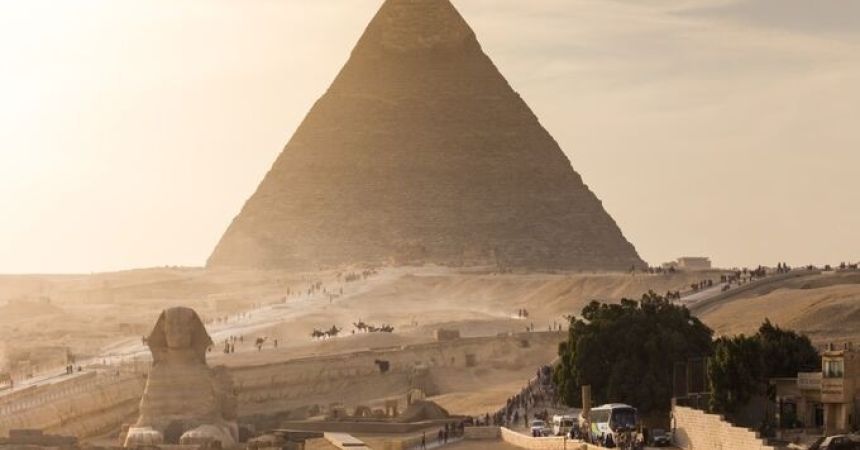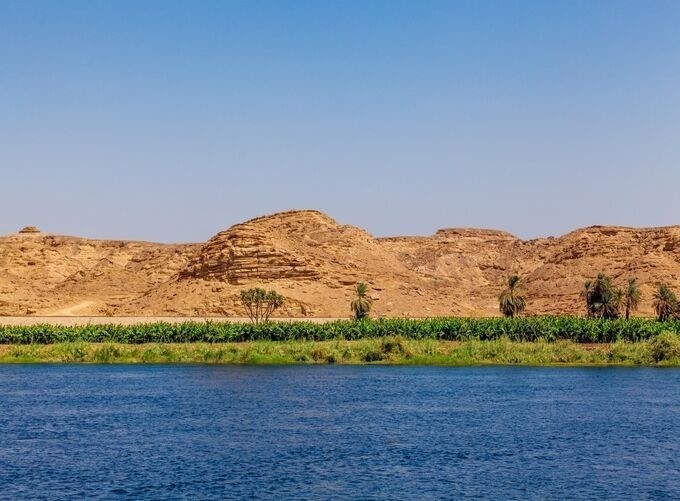
Unforgettable Journey Through Ancient Egypt
Egypt, the cradle of civilization, is a land where history and myth converge in the most spectacular ways. From the towering Pyramids of Giza to the timeless temples of Luxor, Egypt's ancient wonders offer a glimpse into a world that has fascinated historians, archaeologists, and travelers for centuries. This comprehensive guide will take you on an unforgettable journey to Ancient Egypt, exploring its most iconic sites, offering practical travel tips, and immersing you in the rich tapestry of its history and culture.
Introduction to Ancient Egypt
1.1. The Allure of Ancient Egypt
Ancient Egypt is often described as one of the greatest civilizations in human history. Its influence on culture, architecture, and religion has been profound, with many aspects still resonating in modern times. The monuments and artifacts of Ancient Egypt evoke a sense of wonder and curiosity, drawing millions of visitors each year who seek to uncover the mysteries of this storied land.
1.2. Historical Overview
Spanning over 3,000 years, Ancient Egyptian civilization began around 3100 BCE with the unification of Upper and Lower Egypt by the first Pharaoh, Narmer. It reached its zenith during the Old Kingdom (c. 2686–2181 BCE), known for the construction of the Great Pyramids of Giza. The New Kingdom (c. 1550–1070 BCE) saw the flourishing of the empire with grand temples and extensive trade networks. Egypt's decline came with successive invasions and foreign rulers, including the Greeks, Romans, and Arabs.
1.3. Traveling to Ancient Egypt
Traveling to Egypt today involves exploring the remnants of its ancient past through well-preserved monuments and archaeological sites. The country offers a range of experiences from guided tours to independent explorations, each providing unique insights into its historical and cultural heritage.
The Pyramids of Giza: The Pinnacle of Ancient Egyptian Architecture
2.1. The Great Pyramid of Giza
The Great Pyramid, also known as the Pyramid of Khufu or Cheops, is the largest and oldest of the three pyramids at Giza. Built around 2580–2560 BCE, it originally stood at 146.6 meters (481 feet) and was the tallest man-made structure in the world for over 3,800 years. The precision of its construction and the complexity of its internal chambers reflect the advanced engineering skills of the ancient Egyptians.
Highlights:
- The Pyramid Complex: Explore the entire pyramid complex, including the smaller pyramids of Khafre and Menkaure, as well as the Sphinx.
- Inside the Great Pyramid: Although the internal passages are narrow, visitors can venture into the pyramid to see the King’s Chamber and the Grand Gallery.
2.2. The Sphinx of Giza
The Sphinx, a colossal limestone statue with the body of a lion and the head of a Pharaoh, is an iconic symbol of Ancient Egypt. It stands guard over the Giza Plateau and is believed to represent Pharaoh Khafre. The Sphinx’s enigmatic expression and the mysteries surrounding its construction continue to intrigue scholars and tourists alike.
Highlights:
- The Sphinx Temple: Located between the Sphinx and the Pyramid of Khafre, this temple provides insight into the rituals and ceremonies associated with the Sphinx.
2.3. Visiting Tips
- Best Time to Visit: Early morning or late afternoon to avoid the heat and crowds.
- Guided Tours: Consider hiring a knowledgeable guide to enrich your visit with historical context and details.
Luxor: The World's Greatest Open-Air Museum
3.1. The Karnak Temple Complex
The Karnak Temple Complex, located on the east bank of the Nile, is one of the largest and most impressive religious sites in Egypt. Dedicated to the Theban triad of Amun, Mut, and Khonsu, the complex covers 2.5 square kilometers and features a vast array of temples, chapels, and obelisks.
Highlights:
- The Hypostyle Hall: Featuring 134 massive columns, the hall is an architectural marvel and a testament to the grandeur of the complex.
- The Sacred Lake: A serene area used for purification rituals and a great spot for reflection.
3.2. The Temple of Luxor
Located in the heart of Luxor, the Temple of Luxor was constructed by Amenhotep III and later expanded by Ramses II. The temple was the center of the annual Opet Festival, which celebrated the connection between the gods and the Pharaoh.
Highlights:
- The Avenue of Sphinxes: A pathway lined with sphinx statues connecting Luxor Temple to Karnak Temple.
- The Colonnade of Ramses II: Admire the massive columns and the impressive statues of Ramses II.
3.3. The Valley of the Kings
On the west bank of the Nile, the Valley of the Kings is the final resting place of many New Kingdom Pharaohs, including Tutankhamun and Ramses VI. The valley features over 60 tombs, each adorned with intricate hieroglyphics and vivid frescoes.
Highlights:
- Tutankhamun's Tomb: Although small, it is one of the most famous due to its discovery by Howard Carter in 1922.
- The Tomb of Ramses VI: Notable for its elaborate and well-preserved decorations.
3.4. Visiting Tips
- Access to Tombs: Some tombs have additional fees, and it's best to check in advance which ones are open.
- Clothing: Dress modestly and comfortably, and wear sunscreen and a hat due to the heat.
Aswan: The Gateway to Nubia
4.1. Philae Temple
The Temple of Philae, dedicated to the goddess Isis, was originally located on Philae Island but was relocated to Agilkia Island due to the construction of the Aswan High Dam. The temple complex is renowned for its beautiful reliefs and tranquil setting.
Highlights:
- The Great Court: The main entrance features impressive columns and reliefs depicting various deities.
- The Sanctuary of Isis: The inner sanctuary of the temple, which was the focal point of worship.

4.2. Abu Simbel
The Abu Simbel temples, built by Ramses II and his wife Nefertari, are among the most impressive monuments in Egypt. The complex consists of two temples carved into the mountainside and relocated to higher ground to avoid submersion by Lake Nasser.
Highlights:
- The Great Temple of Ramses II: Featuring four colossal statues of Ramses II seated at the entrance.
- The Temple of Hathor: Dedicated to Nefertari and adorned with beautiful carvings of Hathor.
4.3. The Aswan High Dam
The Aswan High Dam, completed in 1970, is a marvel of modern engineering. It controls the Nile's flooding and generates hydroelectric power, but it also led to the creation of Lake Nasser and the relocation of several historical sites.
Highlights:
- Lake Nasser: Enjoy a boat ride on the lake and take in the expansive views.
- The Dam Visitor Center: Learn about the history and impact of the dam on Egypt and its heritage.
4.4. Visiting Tips
- Travel Arrangements: Consider taking a flight or a Nile cruise to Aswan.
- Climate: Prepare for warm temperatures, especially during the summer months.
Cairo: The Vibrant Capital
5.1. The Egyptian Museum
The Egyptian Museum in Cairo houses one of the most extensive collections of ancient Egyptian artifacts. Its treasures include mummies, sarcophagi, and the famous mask of Tutankhamun.
Highlights:
- Tutankhamun’s Treasures: The collection includes the iconic gold mask, jewelry, and other items from the young Pharaoh’s tomb.
- The Mummy Room: Contains the mummies of several prominent figures from ancient Egypt.
5.2. Coptic Cairo
Coptic Cairo is home to some of the oldest Christian churches in Egypt. The area is rich with religious history and provides insight into Egypt’s Christian heritage.
Highlights:
- The Hanging Church: Known for its location above a Roman fortress and its beautiful interior.
- The Coptic Museum: Offers a comprehensive collection of Christian artifacts and manuscripts.
5.3. Islamic Cairo
Islamic Cairo features a wealth of medieval Islamic architecture, including mosques, madrasas, and fortifications. The area is a testament to the city’s rich Islamic history.
Highlights:
- The Citadel of Saladin: A historic fortress offering panoramic views of Cairo and home to the impressive Mosque of Muhammad Ali.
- Khan el-Khalili Bazaar: A bustling market where you can shop for traditional crafts, spices, and souvenirs.
5.4. Visiting Tips
- Local Transportation: Use taxis or ride-hailing apps for convenience. Cairo's traffic can be heavy.
- Safety: Be cautious of your belongings and stay aware of your surroundings in busy areas.
Practical Travel Tips Visiting Egypt
6.1. Health and Safety
- Vaccinations: Check with your healthcare provider for recommended vaccinations before traveling to Egypt.
- Water and Food: Stick to bottled water and avoid raw foods to prevent foodborne illnesses.
6.2. Money Matters
- Currency: The local currency is the Egyptian Pound (EGP). Credit cards are widely accepted, but it’s useful to carry cash for smaller purchases.
- ATMs: Available in major cities and tourist areas.
6.3. Travel Insurance
- Coverage: Ensure your travel insurance covers health emergencies, trip cancellations, and lost belongings.
6.4. Cultural Sensitivity
- Dress Code: Dress modestly, especially when visiting religious sites. For women, it’s advisable to cover shoulders and knees.
- Respect for Local Customs: Be aware of local customs and traditions, and seek permission before taking photos of people.
Holiday in Egypt: History and Relaxation
Egypt offers an unparalleled journey through time, with its ancient monuments and vibrant culture creating an unforgettable experience. From the iconic Pyramids of Giza to the majestic temples of Luxor, each site tells a story of a civilization that has shaped the world in profound ways. Whether you're exploring the mysteries of the Valley of the Kings, marveling at the grandeur of Abu Simbel, or immersing yourself in the bustling streets of Cairo, Egypt promises a travel experience that is both awe-inspiring and enriching. By planning ahead and embracing the beauty and history of this ancient land, you can make your journey through Egypt truly unforgettable.



